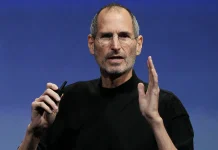Have you decided to remake all of the Marvel films and series? This is the guarantee of enjoying tens of hours of fun that are worth it. But Marvel content didn’t hit theaters following the overall storyline. To find your way among the MCU’s feature films and series, here is the order in which to view the works of the Avengers saga.
As the end of the year promises to be busy, here is the order in which you would have to watch all of the previous Marvel movies to understand the story. Allow some time. End to end, it still represents more than 50 hours of viewing.
The Avengers are obviously at the center of Marvel series and films. Like Stars Wars, Marvel Studio has gotten us used to releasing the various Avengers movies in an order that doesn’t follow the timeline. We have nevertheless concocted the order of viewing of the Avengers saga, and more generally of the series and films of the Marvel Cinematic Universe (MCU). Note that we have also made the same folder to watch the Star Wars movies in order, as well as the James Bond movies and, finally, the X-Men movies.

Table of Contents
How to watch the Marvel movies in order: chronological order
Before taking you through the viewing order of the Marvel Cinematic Universe (and Avengers) saga, let’s start with a quick reminder. The X-Men are not part of the Marvel Cinematic Universe. If Iron Man is the first MCU movie to come out and introduces Tony Stark, you have to start your viewing with Captain America: First Avenger, whose story takes place mainly in 1943. For the rest, you do not have any more only to follow the list below.
●Captain America: First Avenger (1943-1945)
●Captain Marvel (1995)
●Iron Man (2010)
●Iron Man 2 (2010)
●The Incredible Hulk ( 2011)
●Thor ( 2011)
●Avengers (2012)
●Iron Man 3 (6 months after Avengers)
●Thor: The Dark World (~ 2013)
●Captain America: The Winter Soldier (~ 2013)
●Guardians of the Galaxy (2014)
●Guardians of the Galaxy Vol. 2 (2014)
●Avengers: Age of Ultron (2015)
●Ant-Man (2015)
●Captain America: Civil War (2016)
●Black Widow (right after the events of Civil War)
●Spider-Man: Homecoming (2016)
●Doctor Strange (2016)
●Black Panther (2017)
●Thor: Ragnarok (2017)
●Avengers: Infinity War (2017)
●Ant-Man and the Wasp (2017)
●Avengers: Endgame (2017-2022)
●Spider-Man: Far From Home (2024)
●Shang-Chi and the Legend of the Ten Rings (2023/2024)
Where are the series located in chronological order of the story?
The above list only considers Marvel movies. The series have a dominating place now since phase 4 of the MCU. WandaVision, Falcon and the Winter Soldier and Loki were a hit in 2021. If you watch the MCU movies in chronological order, you should be watching WandaVision right after Avengers: Endgame. The series indeed follows the story of Wanda Maximoff a few weeks after the events of the film.
Next, approach Falcon and the Winter Soldier, which takes place between WandaVision and Spider-Man: Far From Home. Loki is inserted between Endgame and WandaVision.
Marvel movies order based on release dates
Phase 1
●Iron Man (2008)
●The Incredible Hulk (2008)
●Iron Man 2 (2010)
●Thor (2011)
●Captain America: First Avenger (2011)
●Avengers (2012)
Phase 2
●Iron Man 3 (2013)
●Thor: The Dark World (2013)
●Captain America: The Winter Soldier (2014)
●Guardians of the Galaxy (2014)
●Avengers: Age of Ultron (2015)
●Ant-Man (2015)
Phase 3
●Captain America: Civil War (2016)
●Doctor Strange (2016)
●Guardians of the Galaxy Vol. 2 (2017)
●Spider-Man: Homecoming (2017)
●Thor: Ragnarok (2017)
●Black Panther (2018)
●Avengers: Infinity War (2018)
●Ant-Man and the Wasp (2018)
●Captain Marvel (2019)
●Avengers: Endgame (2019)
●Spider-Man: Far From Home (2019)
Phase 4
●WandaVision (January 15, 2021)
●The Falcon and the Winter Soldier (March 19, 2021)
●Loki (June 9, 2021)
●Black Widow (July 7, 2021)
●What If…? (August 11, 2021)
●Shang-Chi and the Legend of the Ten Rings (September 1, 2021)
●The Eternals (November 3, 2021)
●Spider-Man: No Way Home (December 15, 2021)
●Ms Marvel (end of 2021)
●Hawkeye (late 2021)
●Doctor Strange in the Multiverse of Madness (March 23, 2022)
●Thor: Love and Thunder (May 4, 2022)
●Black Panther: Wakanda Forever (July 6, 2022)
●The Marvels (November 9, 2022)
●Ant-Man and the Wasp: Quantumania (February 15, 2023)
●Guardians of the Galaxy vol. 3 (May 3, 2023)
The films and series of the Marvel Cinematic Universe are thus grouped into four phases, called The Infinity Saga. With a dozen more films in preparation until 2023, the Avengers saga is the largest in the history of cinema. It will have 26 films by the end of 2021. After Dying Can Wait, James Bond, who held the record until recently, will have 25 films.
The Marvel Universe
In the world of cinema, the Marvel Cinematic Universe is no small feat. If we can criticize the substance, we can only admire the shape of this universe. The MCU is quite simply the biggest project in movie history. Never had a studio – before Marvel – the ambition to spread a saga over more than twenty years. A saga that does not only consist of successive episodes, but of works capable of living on their own, because they are centered on a particular character. A plan headed by Kevin Feige, the boss of Marvel Studios, and which inspires the other studios in their production. Because like it or not, the Marvel Cinematic Universeforever changed the face of entertainment cinema. For better and for worse.
2005, the birth
In the late 90s, Marvel was on the verge of bankruptcy and sold its most famous characters to various studios. Universal inherits from Hulk, Fox from the X-Men or Sony from Spider-Man. Marvel films are therefore limited to stand alone films (without links between them) produced by different production houses. But Marvel Studios, which then recovered from its setbacks, has another idea in mind: To design several films linked together, like a comic book. An ambitious idea. Maybe a little too much.
The first trace of the project was found in 2005. At the time, it was Variety who told us that Marvel signed a partnership with Paramount to make films around the characters that remained to it. A film on Captain America and another on Nick Fury are then considered. We are talking about ten films.
2008, a first step
In 2008, the first Marvel Cinematic Universe movie hit theaters: Iron Man. A success both critical and public, the film lays the foundation stone of the MCU, without getting too wet. We just follow the adventures of Tony Stark, aka Iron Man, against Obadiah Stane.
Directed by Jon Favreau, Iron Man is a solid movie that can then be any superhero movie. Marvel still takes care to lay the foundation stones of its universe. For example, the mythical post-credits scene with Nick Fury (Samuel L. Jackson) gives us a taste of the sequel.
This logic is repeated in the following film: The Incredible Hulk. Having nothing to do with the 2003 film, the film is the ugly duckling of the MCU, with Marvel for a long time trying to make no reference to the events of the feature film. But The Incredible Hulk, in addition to being a stand alone, continues to forge links that will be found in all the films, especially with the presence of SHIELD or a new post-credits scene.
The same method is used in Iron Man 2 – often seen as a prequel to Avengers – Thor and especially Captain America, which introduces the first Infinity Stone (we’ll get to that later). Note that in 2010, Marvel was bought by Disney. Thus, the studio is completely released from its contract with Paramount and distributes its films in addition to producing them.
2012, the consecration
And in 2012, Marvel Studios achieved one of the biggest hits in its history. A big shot called the Avengers. Directed by Joss Whedon, the film incorporates all the codes and standards of blockbusters. However, the studio brings together multiple onscreen superheroes for the first time, battling a common foe: Loki (appeared in Thor ).
The film made a box office hit (over $ 1.5 billion in revenue) and established the notion of a cinematographic universe with the general public. A critical and public success that concludes Phase 1 of the MCU. With Avengers out, Marvel has passed the first stage of its titanic plan. The studio then launches its phase 2, which scriptly follows phase 1. A half-hearted phase 2, but which reinforces the aspect of a shared universe.
Phase 2 on track
After a mastered Phase 1 that kicked off the MCU, Marvel Studios had to bounce back to continue to ride success. And if there was success, we still have the impression that Marvel has rested somewhat on its laurels. Out of six films, Marvel has given four sequels.
Four sequels ( Iron Man 3, Thor 2, Captain America 2 and Avengers 2 ), three of which were unable to renew their license. We must still do justice to Captain America The Winter Soldier who has given a new impetus to the character, in addition to shaking up the history of the MCU with the “disappearance” of SHIELD. It was also during this time that Marvel gave James Gunn a free rein to bring to life its most unadaptable license: Guardians of the Galaxy.
Surprisingly, phase 2 does not end with Avengers 2, since it is Ant-Man, classic but solid, who takes care of finishing the job. An astonishing decision which can be explained by the torments that the film experienced during its production, with an Edgar Wright who decides to drop everything a few weeks before the shoot, and who could upset its release date.
A phase 3 under the sign of renewal
With phase 3, Marvel hopes to correct the situation. It will be the longest of the studio, since it will consist of ten films. Already two have been released: Civil War and Doctor Strange. The former not only ends the Captain America saga, but also brings a new status quo to the Marvel Cinematic Universe. A film which actually brings a real conclusion to phase 2 and which shakes up the established universe like never before.
Doctor Strange brings him a breath of fresh air by introducing not only a new character, but the concept of magic within the universe. The rest of the films will consist of sequels, new licenses and reboots. We will come back to that. But a glance at the schedule allows us to understand that this phase will be an opportunity for Marvel to end aging licenses and introduce new ones, in order to make room for fresh characters (and cheaper actors).
Netflix joins the dance
But Marvel’s real television revolution is to be found on Netflix’s side. In November 2013, the two companies announced a huge partnership. The goal of the operation is to produce four series dedicated to four different characters, then to regroup all these small people in a common series.
Daredevil (whose rights had just returned to Marvel), Jessica Jones, Luke Cage and Iron Fist are the heroes designated by this operation. And if now the thing seems logical, you should know that relaunching Daredevil was a crazy idea in 2013, with fans still remembering the 2003 film.
In March 2015, Daredevil kicked off Netflix and got everyone to agree. If the character evolves well in the Marvel Cinematic Universe, the tone is radically different from what we are used to seeing. A dark, mature tone, leaving aside the humor and the well-felt valves. A real revolution that continues with Jessica Jones and Luke Cage, who remain in the same tone. For the first time, viewers experience a more human side to the MCU. Only lack of taste, Iron Fist, which multiplies errors and clichés to the point of becoming an involuntary parody of the Marvel / Netflix series.
Phase 1 focused on SHIELD
It all started in 2008 with the release of Iron Man. And for this first film, there are of course no references to other productions to be made, given that it is the only one when it comes out. But Marvel did not hesitate to start building its universe, using winks. For example, we see Captain America’s shield in the background in one of the scenes. Shield recovered by Tony’s father, Howard.
But the element that starts the construction of the Extended Universe is the SHIELD organization. An organization featured with Coulson’s face. He and SHIELD will also return in several films of phase 1, we will come back to this, in order to make it clear to the viewer at the time that all the films take place in the same universe. The construction of the Extended Universe is explicitly affirmed at the very end of Iron Man with the introduction of Nick Fury, director of SHIELD, who offers Tony Stark the formation of a super team of heroes: the Avengers.
Captain America The First Avenger (2011) is also a special case. The film is set in 1945, so SHIELD does not yet exist. However, the film is not completely detached from the first. Howard Stark, Tony’s father, for example has a very important supporting role. But Joe Johnston’s film also introduces a very important element for the MCU’s sequel: The Tesseract (or the Space Stone), an artifact that once belonged to Odin (first appeared in Thor). An object which is none other than one of the six infinity stones. Stones with immense powers that want to be recovered by Thanos, the great villain of the Marvel universe who first appears in The Avengers (2012).
A phase 2 centered on the Infinity Stones
With Phase 1 over, Marvel can get down to business. No need to present the universe, the important characters or the links between them. The studio then strives to present a new issue introduced in the first phase: the Infinity Stones. Let’s move on to Iron Man 3 (2013), Captain America The Winter Soldier (2014) or Ant-Man (2015) which make no reference to these stones. The third stone thus appears in Thor The Dark World (2013). This is the Aether, the Stone of reality.
The Guardians of the Galaxy (2015) screenplay, even if it seems disconnected from the rest of the other productions, nevertheless has the Stone of Power (the Orb) at the center of its screenplay. It also introduces the character of the collector (important in Marvel comics when it comes to the Stones) and gives a bigger role to Thanos, the ultimate villain of the MCU.
What about phase 3?
Four Infinity Stones were therefore introduced in phases 1 and 2 (Space, Spirit, Power and Reality). Doctor Strange (2016) the second film in Phase 3, introduces the Time Stone (The Eye of Agamotto) and the Last Stone will be featured in an upcoming film. Who? The bets are open ! We’re betting on Thor Ragnarok.
Civil War (2016), which launches phase 3, passes its turn on the Infinity Stones, but that does not prevent it from being an orgy of connection with the other films. Pretty much every hero in the MCU (except Thor and the Hulk) gets on their feet and gives Phase 2 an honest conclusion, which ended with an Ant-Man resolving nothing at all.
The big question now will be what will be the common thread of this phase 3. It’s too early to say anything, but it is possible that Thanos will be at the center of the debates before his arrival in Infinity War. Phase 3 will also be under the sign of renewal, with the introduction of characters who will have to carry the MCU on their shoulders in the future. We think of course of Doctor Strange, but also of Spider-Man, Captain Marvel or Black Panther.
The most famous MCU movies
Thor ragnarok

The Thor saga has always been the weakest link in the MCU. If the films are not infamous turnips, however, they struggle to reach an acceptable level of quality and thus rise among the essentials of the MCU. Marvel will try to correct the situation with the third and final installment of the saga. How? ‘Or’ What ? By adopting an 80’s atmosphere and totally uninhibited.
In Ragnarok, our good old Thor will be sent to a mysterious planet where he will be forced to fight in an arena. Luckily, he will fall on his buddy Hulk, aka Bruce Banner, and the two heroes will join forces to fight Hela, played by Cate Blanchett. Comic book fans will recognize a synopsis that is furiously reminiscent of Planet Hulk, one of the best arcs dedicated to green giants of recent years.
Black panther

Normally was scheduled for 2017, the Black Panther movie has been shifted to make way for Spider-Man. But do not believe that Marvel neglects the character, already appeared in Civil War, far from it. And Black Panther promises a lot, the film being in very good hands: those of Ryan Coogler ( Creed ).
The cast is not left out either. We logically find Chadwick Boseman, but also Michael B. Jordan, Lupita Nyong’o, Forest Whitaker, Winston Duke, Danai Gurira, Daniel Kaluuya, Florence Kasumba… and even Andy Serkis, who is resuming his role of Avengers 2 : Ulysses Klaw. Note also that this will be one of the very few American blockbusters to highlight Africa, given that all the characters will come from Wakanda, a fictional country in the Marvel universe.
Avengers: Infinity War

The big piece. The film that is one of the highlights of phase 3. Avengers Infinity War, directed by the Russo Brothers, already behind Captain America 2 and 3. This time our heroes will join forces to fight Thanos. No more fun, it will blow up. Filming was taking place in Atlanta, and all of the MCU’s cast are on hand to walk past the camera. For example, the heroes of Earth will finally cross paths with the Guardians of the Galaxy.






























































